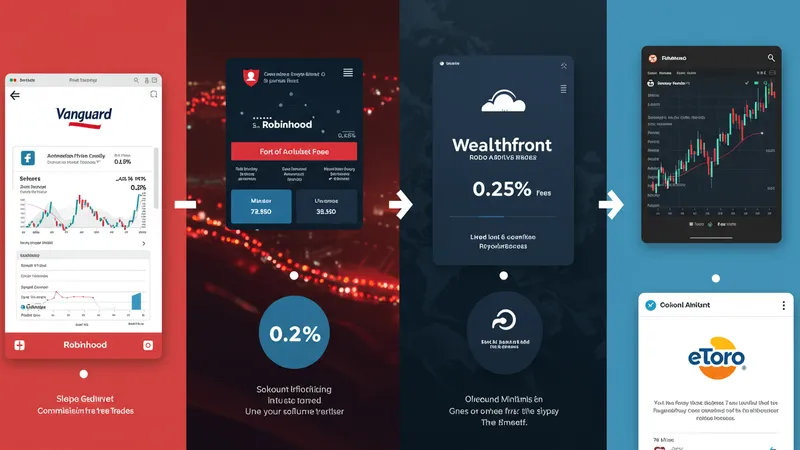

Imagine a world where anyone with an internet connection can access sophisticated financial tools once reserved for investment professionals. That’s the power of online investment platforms: they leverage technology to streamline portfolio management, automate complex trades, and provide educational resources right at your fingertips. Instead of navigating traditional brokerage offices, investors now log in to intuitive web or mobile apps to place trades, track assets, and diversify efficiently. This direct access is transforming how people approach building and growing wealth, shifting the traditional paradigm to one that’s data-driven, user-centric, and more transparent than ever before.
At the heart of this transformation is the democratization of investing—reducing barriers previously set by minimum deposit requirements, geographic limitations, or knowledge gaps. Online platforms leverage digital tools to offer features such as automation, fractional shares, and algorithm-based advice. Users now choose from a wide range of assets, experiment with strategies, and even follow expert investors, all in real time. This evolution doesn’t just alter how portfolios are managed; it redefines the investor experience and expectations for accessibility, personalization, and efficiency.

Online investment platforms have fostered inclusivity by removing traditional gatekeepers and offering educational content tailored to different experience levels. Many platforms provide interactive learning modules, simulators, and research tools so users can make informed decisions regardless of their background. For example, new investors can take advantage of practice accounts or risk-assessment quizzes before committing capital, while seasoned participants utilize advanced charting and analytics features.
Comparing the platforms above reveals differing strengths: Vanguard and Fidelity emphasize low-cost, comprehensive investment vehicles and strong research, while Robinhood prioritizes user experience and accessibility. eToro stands out for its social integration, which fosters community engagement and learning by imitation, and Wealthfront’s robo-advisor model appeals to those looking for algorithm-driven, hands-off portfolio management with lower fees. The result is a vibrant ecosystem with a platform tailored to nearly every investor’s style.
Rapid adoption of online investment platforms is underscored by staggering participation growth. According to recent industry surveys, millions of new investors joined digital platforms over the past five years, driven by increasing smartphone adoption, falling fees, and a desire for autonomy. Asset management is no longer limited to high-net-worth clients; teens, retirees, and global users now participate, empowered by tech-driven tools and community-oriented features.
Despite their benefits, these platforms demand careful scrutiny. Security protocols, transparency in fee structures, and customer support quality can vary widely. Savvy users compare these factors and select platforms that align with their goals and risk tolerance. Recognizing these nuances can be the difference between a smooth investment experience and unexpected frustrations.
This initial glimpse reveals just how fundamentally these platforms are transforming investment and wealth-growth practices. The deeper details reveal even more valuable insights ahead, particularly when it comes to user experience, automation, and the future of portfolio personalization.
One of the most defining characteristics of modern online investment platforms is the focus on user-centric interfaces. Platforms like Robinhood and eToro have adopted minimalist designs, enabling rapid order placement and portfolio tracking from any device. This usability factor attracts users who might have been hesitant to approach traditional investing, making the process more approachable and less intimidating. Wide-ranging customization, push notifications, and educational prompts further support investment confidence.

Automation has become a cornerstone for platforms aiming to serve both newcomers and experienced investors. Wealthfront exemplifies this by automatically rebalancing user portfolios, harvesting tax losses, and adjusting risk exposure with minimal intervention. This not only saves time but also helps optimize returns according to user-defined preferences. As automated features grow more sophisticated, they streamline tasks that would require active monitoring and decision-making in a traditional brokerage environment.
The rise of fractional shares has had a pronounced impact, particularly among younger cohorts or those with limited initial capital. Platforms including Fidelity, Robinhood, and Vanguard allow investors to purchase fractions of expensive stocks or ETFs, enabling high diversification without requiring large outlays. This opens doors for broader participation and encourages consistent, incremental investing.
Embedded educational tools further differentiate user experience across online investment platforms. Fidelity and Vanguard offer webinars, articles, video courses, and simulators, serving all learning stages. Information-rich dashboards and real-time market analysis ensure users aren’t just placing trades—they’re building knowledge along the journey.
Pricing models are central to platform comparison. Vanguard, Fidelity, and Robinhood all offer commission-free trades, but variations emerge in terms of account fees, minimum investments, and management costs. Wealthfront’s automated robo-advisor service charges a flat 0.25% annual fee, attractive for those preferring set-and-forget investing. Meanwhile, eToro’s unique social platform relies on spread-based fees, which users must evaluate carefully when planning frequent trades or copying portfolios.

Account minimums remain a hurdle for some investors. While Robinhood and eToro feature minimal or no deposit requirements—a win for first-time participants—others, like Wealthfront, require a small threshold to access automated features. This directly influences the audience each platform serves and shapes user expectations regarding accessibility and onboarding.
Research capabilities are another differentiator. Fidelity stands out for integrated in-depth research, fundamental analysis, and market screeners. Vanguard similarly provides extensive tools but with a skew toward long-term investing. Robinhood offers streamlined analytics suited for rapid, short-term action but with less comprehensive coverage. Users mindful of research needs must weigh these offerings against their own preferred strategies.
Global reach is steadily increasing, particularly with platforms like eToro, which accommodate multiple currencies and serve users from a wide range of jurisdictions. This aspect is vital for those looking to diversify internationally and participate in global markets from their home country or while traveling.
User experience goes far beyond interface design. Reliable customer support, robust educational offerings, and on-the-go access shape overall satisfaction. Wealthfront, for example, integrates automated help centers with human advisors, while eToro offers strong community engagement tools. These create environments where users feel supported—not left to fend for themselves after onboarding.

Security, understandably, is at the forefront of online investing. All leading platforms deploy multi-factor authentication, encryption, and regular audits. However, users should routinely check security protocols, especially regarding withdrawal processes, account access, and data protection policies. Robinhood, after experiencing high profile breaches, improved its security measures—a reminder of the evolving threat landscape and the need for personal vigilance.
Transparency in fees, operations, and risks is crucial for investor confidence. Fidelity and Vanguard excel by publishing clear, granular documents detailing all potential costs and investment conditions. eToro and Robinhood also maintain transparency but rely more on concise, app-friendly disclosures, placing the onus on users to educate themselves before diving into complex assets or strategies.
Platform updates and scalability further define ongoing user experience. The most popular platforms are constantly adding new features—like real-time newsfeeds, more diverse asset classes, or advanced analytics—responding to competitive pressure and changing user demands. Investors interested in long-term engagement should monitor roadmap announcements and user reviews for insight into future development.
Artificial intelligence and sophisticated algorithms are set to become even more embedded in online investment platforms. Robo-advisors already rely on basic algorithmic principles for rebalancing and risk management, but future implementations promise tailored investment paths informed by real-time behavioral and market analysis. This could further lower barriers for those unsure about constructing diversified portfolios or identifying emerging sectors.

Social and community-driven features will likely continue expanding, spurred by the popularity of platforms like eToro. Features such as live chat rooms, expert-led forums, and portfolio sharing allow users to learn in a collaborative, interactive setting. Social trading’s growth demonstrates the appeal of collective intelligence and peer-based strategies, offering routes for new users to build experience.
Sustainability and ethical investing are gaining momentum across digital platforms. Vanguard and Fidelity have expanded their offerings to include ESG funds and responsible investment filters, responding to heightened demand. The ease of accessing and comparing these options aligns with users' desires to align investments with personal values, further broadening platform appeal.
As digital investing evolves, regulatory frameworks and platform adaptability remain significant. Ensuring that platforms meet compliance standards, offer protection in volatile markets, and respond quickly to technical disruptions will influence user trust and platform longevity. Ultimately, ongoing innovation paired with strong oversight will define the next generation of online investment platforms and how people build and maintain wealth.